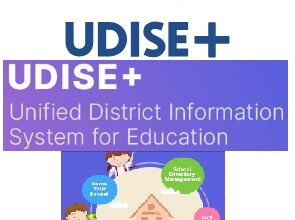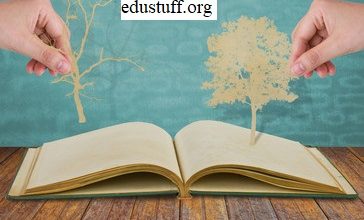
Learning Activities for Kindergarteners: Unleash the Joy of Learning
Learning Activities for Kindergarteners
In the early stages of life, learning becomes a crucial aspect of a child’s development. Kindergarten marks the beginning of a formal educational journey, and engaging kindergarteners in various learning activities can greatly enhance their growth and development. Discovering Fun and Engaging Learning Activities for Kindergarteners that Make Education Exciting and Memorable. In this article, we will explore a range of engaging learning activities that can make the kindergarten experience an enriching and enjoyable one for children.
Language and Literacy Learning Activities
- Storytelling and Puppetry
Engaging kindergarteners in storytelling sessions and puppetry activities can greatly enhance their language skills and foster their creativity. Storytelling allows children to immerse themselves in imaginative worlds, enhancing their vocabulary and language comprehension. Through stories, children learn about different characters, settings, and plotlines, which sparks their curiosity and expands their knowledge of the world. Incorporating puppets adds an interactive element, enabling children to actively participate in the story, express themselves, and develop their communication and social interaction abilities. By manipulating puppets, children can experiment with different voices and perspectives, building their confidence in expressing their ideas and emotions.
- Rhyme Time and Wordplay
Rhymes and wordplay are not only fun but also valuable for language development. Engaging kindergarteners in rhyme time activities, such as reciting nursery rhymes or creating their rhymes, strengthens their phonemic awareness and improves their pronunciation and vocabulary. Rhymes help children recognize patterns in language and develop their sensitivity to sounds. This skill is crucial for learning to read and write. Wordplay activities like tongue twisters or word games encourage children to manipulate sounds and words, fostering their linguistic creativity and expanding their language skills. These activities promote active listening, critical thinking, and verbal dexterity.
- Letter Recognition and Formation
Introducing kindergarteners to letters and helping them recognize and form letters is crucial for their literacy development. Activities such as letter tracing, using magnetic letters, or creating letters with play dough enable children to practice letter recognition and develop fine motor skills. Through these activities, kindergarteners become familiar with letter shapes and sounds, laying the foundation for reading and writing. Letter formation exercises not only strengthen their fine motor skills but also help them understand the connections between letters and their corresponding sounds. By engaging in hands-on letter activities, kindergarteners develop a solid foundation for future literacy skills.
Math and Numeracy Learning Activities
- Counting and Number Recognition
Counting and number recognition activities are fundamental for developing numeracy skills. Engaging kindergarteners in counting games, such as counting objects or singing number songs, reinforces their understanding of numbers and enhances their number sense. By incorporating everyday objects and situations, children can relate numbers to real-life contexts, strengthening their mathematical understanding. Counting also helps children develop one-to-one correspondence and the concept of quantity. It is important to provide a variety of counting experiences, such as counting toys, steps, or snacks, to make the learning process interactive and meaningful.
- Sorting and Classifying
Sorting and classifying activities provide kindergarteners with opportunities to categorize objects based on various attributes. By sorting objects by color, shape, size, or type, children develop critical thinking skills and learn to identify similarities and differences. This activity helps children build foundational skills for more advanced mathematical concepts and promotes logical reasoning. Sorting and classifying activities can be done with objects found in the classroom or even during outdoor exploration. For example, children can sort leaves by shape or rocks by size. By engaging in these activities, kindergarteners develop their classification skills and gain a deeper understanding of attributes and relationships.
- Shape and Pattern Exploration
Exploring shapes and patterns allows kindergarteners to develop spatial awareness and logical thinking. Learning activities like shape recognition games, creating patterns with blocks or stickers, or completing pattern sequences enhance children’s ability to identify shapes and notice repetitive sequences. Kindergarteners can explore different shapes and their properties by building with blocks or using manipulative. Understanding shapes and patterns is foundational for geometry and mathematical thinking. By engaging in these activities, kindergarteners sharpen their visual and cognitive skills, which are crucial for future math learning.
Science and Exploration Learning Activities
- Nature Walks and Observations
Taking kindergarteners on nature walks and encouraging them to observe the natural world can foster their curiosity and introduce them to scientific concepts. Children can explore plants, insects, and natural phenomena, developing a sense of wonder and appreciation for the environment. Guided discussions and hands-on exploration during nature walks provide opportunities to ask questions, make observations, and foster a love for nature and science. Kindergarteners can observe the different colors, shapes, and textures of leaves, flowers, and other natural elements. They can also examine insects and their behaviors, fostering an understanding of biodiversity and the interconnectedness of living things.
- Sensory Play and Experiments
Sensory play and simple science experiments offer kindergarteners a chance to engage their senses and develop their scientific thinking. Sensory play, such as exploring textures or playing with water and sand, stimulates children’s sensory perception and helps them make connections between their senses and the world around them. Children can experiment with different materials and observe how they feel, smell, and respond to touch. Conducting simple experiments, like mixing colors or observing the effects of light and shadow, allows children to practice making predictions, experimenting, and drawing conclusions. Through sensory play and experiments, kindergarteners develop their scientific inquiry skills and cultivate a sense of curiosity and exploration.
- Planting and Gardening
Engaging kindergarteners in planting and gardening activities provide hands-on experiences that teach them about plant life cycles and instill a sense of responsibility and care for the environment. Children can participate in planting seeds, watering plants, and observing the growth process. Through these learning activities, kindergarteners learn about the needs of plants, the importance of sunlight and water, and the interdependence between living organisms and their environment. Gardening fosters a sense of ownership as children witness the growth and development of plants they have nurtured. These learning activities also provides opportunities for children to learn about sustainability, environmental stewardship, and the importance of preserving nature.
Social and Emotional Development Learning Activities
Role-playing and pretend-play activities encourage kindergarteners to explore different social roles, enhance their empathy, and develop their social skills. By engaging in imaginative play scenarios, such as playing house, school, or community roles, children learn to understand and respect others, practice cooperation, and develop their communication and problem-solving abilities. Pretend play allows children to step into different perspectives, helping them develop their social and emotional intelligence. Kindergarteners can take on various roles, such as a teacher, doctors, or chefs, and engage in pretend scenarios that involve collaboration, negotiation, and conflict resolution.
- Mindfulness and Relaxation Exercises
Promoting mindfulness and relaxation exercises among kindergarteners supports their emotional well-being and helps them develop self-regulation skills. Simple mindfulness practices, such as guided breathing exercises or moments of calm reflection, enable children to pause, focus their attention, and cultivate awareness of their thoughts and emotions. These practices help children manage stress, increase self-awareness, and foster a positive mindset. Mindfulness exercises can be incorporated into daily routines, such as taking a few minutes each day to focus on deep breathing and paying attention to the present moment. Relaxation exercises, such as guided visualizations or progressive muscle relaxation, can help kindergarteners learn to calm their bodies and minds. By incorporating these practices, we provide children with valuable tools for managing their emotions, reducing anxiety, and promoting a sense of well-being.
Engaging kindergarteners in collaborative projects and teamwork activities promotes cooperation, communication, and the development of essential social skills. Group tasks like building structures with blocks, creating artwork together, or solving puzzles as a team encourage children to share ideas, work cooperatively, and find solutions collectively. Through these learning activities, kindergarteners learn to listen to others, value diverse perspectives, and develop essential skills for collaboration and teamwork. Collaborative projects provide opportunities for children to practice effective communication, active listening, and problem-solving. They learn to respect and appreciate the contributions of others while developing their own leadership and teamwork skills.
Arts and Creativity Learning Activities
- Drawing and Painting
Drawing and painting activities allow kindergarteners to express their creativity and develop their fine motor skills. Providing children with various art materials like crayons, markers, or paintbrushes and encouraging them to draw and paint freely fosters their imagination and self-expression. Drawing and painting help children develop hand-eye coordination, refine their motor skills, and build confidence in their artistic abilities. Kindergarteners can explore different art techniques, experiment with colors, and create their unique artworks. Through these learning activities, they learn to communicate visually and express their thoughts and emotions.
- Music and Movement
Engaging kindergarteners in music and movement activities promotes their coordination, rhythm, and self-expression. Singing songs, playing musical instruments, and engaging in dance or movement games allow children to explore different sounds, develop their auditory discrimination skills, and enhance their gross motor skills. These learning activities provide opportunities for self-expression, creativity, and joyful exploration of the world of music. Kindergarteners can experiment with making sounds using their voices or simple musical instruments. They can also engage in movement activities that promote body awareness, coordination, and spatial understanding. Music and movement learning activities foster a sense of joy and encourage children to express themselves through sound and movement.
- Sculpting and Crafting
Sculpting and crafting activities offer kindergarteners opportunities to create three-dimensional objects using various materials. Working with clay, recycled materials, or craft supplies, children can engage in hands-on artistic experiences, fostering their creativity and problem-solving abilities. Sculpting and crafting activities also encourage fine motor skills and attention to detail. Kindergarteners can create sculptures, collages, or other art forms using their imaginations and the materials provided. These learning activities promote self-expression, as children transform their ideas into tangible creations. Through sculpting and crafting, kindergarteners develop their artistic skills, expand their creativity, and gain a sense of accomplishment.
Read Also:
Montessori Activities for Home: Unleash Your Child’s Potential
Scholarships for International Students in the USA
Careers in Educational Technology
Learning Apps for Reading: Boost Your Reading Skills
How Much Free Times Do College Students Have?
Physical and Gross Motor Learning Activities
Engaging kindergarteners in outdoor games and sports promotes physical fitness, gross motor skill development, and social interaction. Activities like tag, relay races, or ball games encourage children to be active and enhance their coordination, balance, and spatial awareness. Outdoor play also provides an opportunity for children to enjoy fresh air, connect with nature, and develop a love for physical activity. Kindergarteners can engage in games that involve running, jumping, and other physical movements, building their endurance and strength. These learning activities foster social interaction, as children learn to take turns, follow rules, and work cooperatively with their peers.
Setting up obstacle courses or organizing relay races can be exciting and challenging for kindergarteners. These learning activities enhance their coordination, agility, and endurance, while also promoting teamwork and perseverance. Obstacle courses can be designed with simple materials like cones, hula hoops, or ropes, providing opportunities for both physical and cognitive development. Children navigate through obstacle courses by crawling under, climbing over, or jumping through various challenges. These learning activities improve their gross motor skills, balance, and body control. Relay races, on the other hand, require children to work together as a team, passing batons or objects to complete a task. They learn to communicate, strategize, and support each other, fostering cooperation and camaraderie.
Introducing kindergarteners to simple yoga poses and stretching exercises can promote flexibility, body awareness, and mindfulness. Yoga activities designed specifically for young children incorporate playful elements, animal poses, and imaginative storytelling to engage their interest and make the practice enjoyable. Yoga encourages kindergarteners to connect with their bodies and focus on their breath. Through gentle stretching and balancing poses, they develop strength, coordination, and body control. Yoga also promotes relaxation, self-calming techniques, and body-mind awareness. By incorporating yoga into their routine, we provide children with tools to manage stress, enhance their well-being, and develop a positive relationship with their bodies.
Conclusion
Engaging kindergarteners in a variety of learning activities is essential for their holistic development. By incorporating language and literacy learning activities, math and numeracy exercises, science and exploration tasks, social and emotional development practices, arts and creative projects, and physical and gross motor learning activities, we create an enriching environment that supports children’s growth in multiple domains. These learning activities foster cognitive skills, promote social interaction, enhance emotional well-being, and develop physical abilities. As educators and parents, let’s embrace the joy of learning and provide kindergarteners with the opportunities they need to thrive and succeed in their educational journey.






